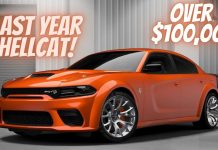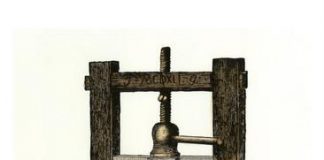Kia is not fooling around.
Korea’s other automaker has a surprise on deck for 2012 that should make econo-compact buyers smile – and will definitely make competitors sweat.
WHAT IT IS
The Forte is Kia’s entry-level compact car. It’s available in regular sedan, hatchback sedan and coupe (which Kia spells Koup) bodystyles and marketed as a cut above the typical economy car as far as how it looks, how big it is and what it comes with – but without a price tag to match.
A base LX sedan with 2.0 lter engine and six-speed manual transmission has an MSRP of $14,995. The hatchback sedan – which comes standard with a six-speed automatic transmission – starts at $16,895.
Both the standard sedan and the hatchback sedan are available with a larger 2.4 liter engine.
The sporty Koup – which is almost a different model because it has its own unique exterior – is also available with either engine, as well as either transmission. Base price is $16,995 for an EX with the 2 liter engine and six-speed manual. A top-of-the-line SX Koup with 2.4 liter engine and six-speed automatic starts at $18,395.
Buyer’s note: Kia had not released official 2012 pricing at the time of this review but expect the prices quoted above to be about what they’ll be. 
WHAT’S NEW FOR 2012
This review was written before official details were either confirmed or denied, but apparently Kia is going to build on the success of the 2011 Forte by adding a hybrid model to the mix and offering a turbocharged version of the 2.0 liter engine – packing as much as 274 hp – in the Koup at least.
The hybrid Forte should deliver about the same fuel economy as a Honda Civic hybrid while the turbo Koup would – if the hints are accurate – outclass would-be competitors like the Honda Civic Si by as much as 70 hp while selling for about the same money .
WHAT’S GOOD
Already one of the best deals going in its class.
Honda Civic-like array of bodystyles, powertrains, available features – at a Kia price.
Close to 40 MPG highway with Fuel Economy Package.
Two of the strongest base/optional engines you can get in the under-$20k segment
Top-drawer warranty coverage.
WHAT’S NOT SO GOOD
Manual transmission not available in hatchback sedans with either engine.
Telescoping steering wheel comes only with higher-cost SX trims.
Fuel Economy Package upgrades ought to be standard – not extra cost.
UNDER THE HOOD
One of the Forte’s fortes is power. Even the least expensive LX versions come standard with a 156 hp, 2.0 liter four-cylinder engine. Just for comparision a Toyota Corolla’s standard 1.8 engine is rated 132 hp; the Honda Civic’s standard 1.8 liter engine makes 140 hp. The Forte’s standard engine is among the most powerful engines you’ll find in a new car costing under $15k to start.
The 2.0 liter engine can be teamed up with either a six-speed manual transaxle or (optionally), Kia’s six-speed “Sportmatic” automatic, with steering wheel-mounted paddle shifters.
Unfortunately – and inexplicably – the hatchback sedan comes only with the automatic. But the upside is you get better gas mileage with this transmission: 26 city, 36 highway vs. 25 city, 34 highway with the manual. And that can be bumped up t0 27 city, 37 highway if you choose the optionally available Fuel Economy Package – which includes low-rolling-resistance tires, electric-assist power steering, low-drag alternator and a more aerodynamic exterior to cut down on wind resistance.
The next-up Forte engine is a larger, 2.4 liter four cylinder that delivers 173 hp. In the sedan, you can team this engine up with a manual transmission, but (again) if you choose the hatchback sedan, it’s the automatic only.
A Forte with 2.0 liter engine and six-speed manual can reach 60 mph in just over 8 seconds.
A Forte sedan or Koup with the 2.4 liter engine and six-speed manual can reach 60 mph in about 7.3-7.5 seconds.
If Kia does follow through with the hints it’s been dropping, in early spring 2012 the Optima’s 274 hp turbocharged engine will be available in the Koup and possibly the four and five-door Fortes, too. The target seems to be the MazdaSpeed3 – the only other FWD compact with that kind of power for around $23k or so.
The expected hybrid version of the Forte could be a game-changer, too.
ON THE ROAD
Models with the 2.0 liter engine accelerate as well or better than other cars n this class/price range – and the SX with the 173 hp engine is as quick 0-60 as a Mazda Miata.
It’s a shame that the hatchback sedan is an automatic only deal, though. The base 2.0 liter is powerful enough to work ok with the automatic, but a manual would be more fun – even if not quite as fuel-efficient as the sharp-shifting six-speed automatic.
The base /LX Forte sedan/hatchback sedan/Koup’s ride is softer and more isolated from the road than the typical economy car’s – a desirable feature for people who aren’t looking to throttle-steer through corners as much as they are looking for a quiet, comfortable get-you-to-work-and-home-again ride.
I liked the Forte’s soft, plush, almost mid-sized car ride more than the Honda Civic’s noticeably firmer, almost sports-car ride – and much more than the much over-rated Toyota Corolla’s tinny/bouncy economy car feel.
If you want a bit more sportiness, choose the SX trim (available with all three bodystyles). It has a firmer ride and sharper reflexes due in large part to the more aggressive 17 inch wheels with performance tires. It’s not quite as quick as a Civic Si, but the handling/steering/responsiveness is in the same ballpark.
And when Kia puts the Optima’s 274 hp engine in this thing a few months from now, look out.
AT THE CURB
It’s hard to tell from looking at it that the Forte is Kia’s least expensive model.
For openers, it’s a pretty large car for an entry-level compact – and there are several un-economy car styling details such as the compound curves of the front quarter panels, which arc upward near the joint at the base of the windshield (the “A” pillar) to meet an upward swooshing front door sill. Ok, so the front end has some obvious Civic-inspired hints to it. But as GM styling legend Bill Mitchell once put it, there’s nothing wrong with cribbing someone else’s design if you crib a good design.
The interior’s big selling point is its roominess compared with competitors. For example, the Forte sedan has more front and rear legroom and headroom than the Corolla and Civic. You could buy a Nissan Versa 1.6 and get more backseat room (including about three inches more rear seat legroom) than all of them for around $11k with AC. But the Versa 1.6 is basic transportation, early ’70s style. It doesn’t even come with a radio.
Meanwhile, the LX Forte comes standard with an MP3-playing stereo with SiriusXM satellite – as well as Bluetooth wireless connectivity. No extra charge. The only almost-essential that’s not include in the base price is AC. Order the EX and you get that plus power windows, locks, cruise control, keyless entry and a very nice six-speaker audio system.
High-end options (many of these are standard on SX versions) include keyless ignition, voice-command, metallic interior trim plates and leather seats with heaters for the driver and front seat passenger. You can order an SX htachbcak sedan or Koup with umost everything on the menu and only be looking at about $23k.
That’s a pretty sweet deal. A top-of-the-line Civic GX starts at $25,490 – and that’s with the 140 hp, 1.8 liter engine (vs. the SX Forte’s 174 hp engine).
Lots of trunk space, too.
Almost 15 cubic feet – which is significantly more than the Civic (12 cubic feet ) and the Corolla (12.3 cubic feet). The Forte’s trunk number also beats the price-busting Versa (13.8 cubic feet).
And those numbers go up if you choose the hatchback, which has almost 20 cubic feet behind the second row.
THE REST
So, what’s not to like?
Just the few small items mentioned (no manual with the hatchback sedan; telescoping steering wheel only available in the higher-cost SX). But that aside, if AC were standard in the base model LX, this car would be hard to knock on any level.
And: Kia must feel confident about the quality of its cars because it offers the most comprehensive and generous warranty coverage in the business: Ten years/100,000 mile powertrain (engine and transmission) warranty and five-year, 60,000 mile coverage on the whole car, wheels to roof.
This is nearly twice the coverage Toyota and Honda offer (three years/ 36,000 miles).
Plus free roadside assistance.
THE BOTTOM LINE
Appealing as it already is, the soon-to-be-here turbo Forte and hybrid Forte could make this Kia the one to beat.
Throw it in the Woods?












Hi Eric,
I live in Korea feel some pride in my adopted country’s rise in the US auto market. When I lived in the USA I drove a Kia Spectra 5. One of the best cars I’ve ever owned. I hated to sell it. I wish I’d brought it over here, but it seemed odd to import a Korean car into Korea.
I rented a Kia Forte for a long haul trip where I moved all of my worldly goods out of my buddy’s place and into my own apartment. The Forte not only handled the massive cargo I was hauling (think three overseas duffels and four or five large Sterlite platic boxes, plus random loose crap) but it handled it with style. It was a great car to drive. Zippy, smooth, comfy, stylish. It was basically everything a guy could want.
If I ever move back to the USA, I’m going to buy Korean–not just because I live here, but because they make good cars these days.
By the way, the domestic market here is about $3,000-5,000 more expensive than the US market, and Koreans claim that the Kias and Hyundais made in the USA are of higher quality than the domestically produced ones. Koreans are PISSED because they think they are getting a poorer quality car for more money. Probably true, and they look forward to the FTA being approved so they can start buying American cars without the wicked tariff that is currently slapped on them.
Great website. I found you through Lew Rockwell dot com.
Hi Matt,
Thanks for the kind words – and, good to have you with us!
I’m a big fan of Kia, also. The Spectra, in particular, is a sharp car and a great value, too.
I can’t even think of an foreign car that is a POS right now. I can say I don’t like the styling on a lot, but none are POS. I too love the old mouse and rat motors.
The guy that is saying they are “shit” is obviously young and or an idiot. I am a fan of big block V8’s but that doesn’t mean that they are practical or the smart choice for a regular car. I get this type of response all the time on other sites and it is always some 14 thru 19 year old hick that doesn’t have a clue about cars.
Yes, a big block in my 56 Ford truck or Chevy Chevelle is cool, but a fast car that rides and drives nice is always going to be the best choice for a daily driver. 10 miles to the gallon is a joke for a daily driver car when the gas prices are $3.50+ a gallon.
The smaller displacement cars now days are actually faster, handle better and get way better gas mileage than the old stock big block cars. But he wouldn’t know that.
An average 60’s big block car would only run a mid 15 second quarter mile. So a Optima with a 276 hp turbo 4 is going to beat that time.
That guys comments are not even worth a response, only a delete.
He’s just a heckler.
Hi Paul,
Amen that!
I love muscle cars – I own a muscle car. But (as you’ve pointed out) as cool-looking and full of attitude as they were, few were quicker than low 14s in the quarter; many were in the 15s – and they all got worse mileage on the highway than almost any modern car gets in city/stop and go driving.
The foreign cars are Shit. OOh its got 274 horsepower, pfft. If you want REAL horsepower then get a 454 chevy big block that puts out 650 horses. And if you put that engin in, ooh lets say a 1972 Chevelle, then you can ride in style with the muscle to back you up, unlike these new peice of shits that keep rolling out. Dont go buying the new camaros or mustangs either. They were good cars, but they were turned to shit. Dont get an eclipse or saturn and try to make in into a cool car, like a 1969 Dodge Charger. They just turn out sounding like a pissed off bumble bee.
“Shit”? How so?
They’re as reliable and well-built as a Kimber 1911. They’ll go 200,000 miles/15 years or more usually without asking for more than normal/basic maintenance. They start immediately, even when it’s -5 degrees outside; they almost never stall or overheat. And they’ll often give you 30-plus MPG on the highway all the while, too.
No new cars (either foreign or domestic) are “shit” in terms of their functionality or engineering. The lower-cost ones like the Forte are also excellent values (see point above).
And it’s silly to compare a V-8 powered, medium-full-sized RWD muscle car with a compact FWD economy car. If you want to go down that road, compare a modern economy car with something equivalent from the past, such as a Chevette or Pinto.
Which is “shit,” do you think?
PS: I love classic muscle cars. I’ve owned (and own) classic muscle cars, including my 455 Trans-Am. They’re magnificent things, but let me hip you to a few things:
* Most classic-era muscle cars did 0-60 in the 6-7 second range in factory-stock trim. A new Camry V-6 is quicker, 0-60 and through the quarter mile than two-thirds of all ’60s-’70s-era muscle cars. It also has a much higher top speed (thanks to better aerodynamics and more than just 3-4 forward speeds in the transmission).
* A new muscle car like a current Mustang GT (400 hp) would beat almost any mass-produced/ stock classic-era muscle car in a drag race and obliterate it in a top-speed run. The only classic-era muscle cars that could beat the new Mustang’s 0-60 and 1/4 mile times are barely street driveable all-out virtual bracket racers such as a ZL-1 Camaro or L88 Corvette.
* Almost all classic muscle cars handled like shit and stopped even worse. Part of the reason was the crude (usually, leaf-sprung) suspensions but also the fact that not one factory ’60s-’70s era muscle car ever came with wheels larger than 15 inches (and some, like my friend’s ’71 Plymouth GTX, came with 14s) while almost any new compact econo-car comes with 16s or 17s. Also four-wheel-disc brakes, which not one muscle car ever came with from the factory until 1978, when Pontiac offered it as an option on the Trans-Am.
* Horsepower? 274 hp from 2.0 liters is fucking impressive. Remember now, that’s SAE net (real, engine in the car, accessories and production exhaust hooked up) horsepower, not the BS SAE gross hp (engine on a stand, “tuned,” with headers and no accessories mounted) used to rate most muscle car engines through 1972.
Want some perspective? One of the hottest muscle car V-8s of the early ’70s was the 1973-’74 Pontiac SD-455. In modern parlance, the 455 displaced 7.5 liters. That’s almost four times the displacement of the Kia turbo 2.0 liter engine. The SD-455 carried an SAE net horsepower rating of 290 vs. 274 for the for the Kia. Put another way, if the Kia’s engine had the same displacement as the SD-455, it would be making more than twice the power.
A few years later, the very hottest engines ont he market were the Pontiac L78/W72 “TA” 400 (220 hp) in the ’77-’79 Trans-Am and the L-82 350 (210-240 hp) in the same era Corvette. The Kia’s engine makes more power than both.
A new Mustang GT’s 400 hp works out to nearly 500 hp under the old standard. Was there a single classic-era muscle car big block that produced 500 hp? Maybe one or two (like the 426 Street Hemi or L88 427s, etc.) But, again, those engines were barely street-driveable. Solid lifter cams; big holley carbs. They ran like hell in the quarter-mile. But they ran like shit everywhere else.
Yes, you can modify a 454 to produce 600 hp. But that’s modified, not factory. How much hp can be gotten out of a Mitsubishi EVO? (Hint: Some of these are running 11 second quarters). Put a supercharger on a new Mustang GT… probably 550 hp. And fully streetable.
The fact is most factory muscle car V-8s produced 350 real (SAE net) hp or less. Most were 14-15 second quarter-milers. Only a very few were in the 13s, factory stock.
I love classic-era muscle cars. They can’t be beat on looks or attitude. But I also know what they could do and could not do – and how they really were. Maybe you’re too young to remember.
Eric, I think I know who this “A Patriot” moron is. There’s a dude with an old Chevy pick-up that lives near me. He tried to keep up with my Miata through two tight nineties few weeks back and nearly lost it. I couldn’t help laughing at his dumb ass. I suspect the floor boards are rotted out in that old Chevy. The Carbon Monoxide from the open headers on his “454” has probably become his constant companion now. CO induced brain damage will cause people to write asinine things like this. I few more exhaust fumes and he’ll be a Clover. 😉
What an idiot…
I second that…
I dont think I will be driving a 454, as I need an economical family car under $20G. The Forte Hatch for 2012 is excellent, looks good and has satilite and bluetooth a 10 year warranty and gets comments all the time. It is an excelent value hillbilly boy..